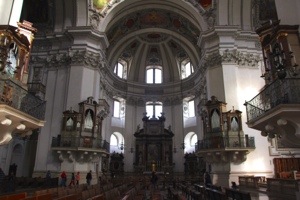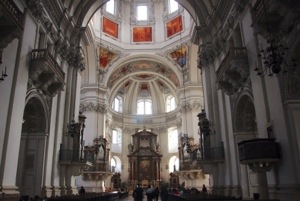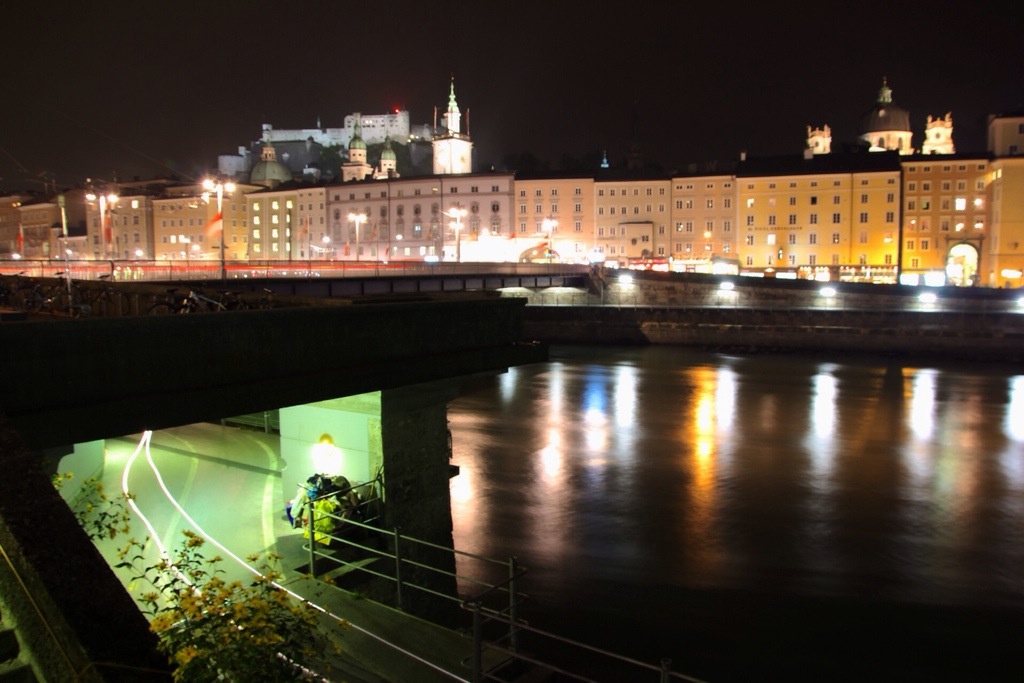Salzburg (7 and 8 October): Day Seventeen and Eighteen
In some ways, the trip characterised the difference between Eastern and Westen Europe. We pottered across Hungary to the Austrian border, where the speed of the rather high tech train rose abruptly from 90 km/h to 150. Once past Vienna Westbahnhof, we shot along at 230 km/h and arrived in Salzburg and it’s new station efficiently and smoothly.
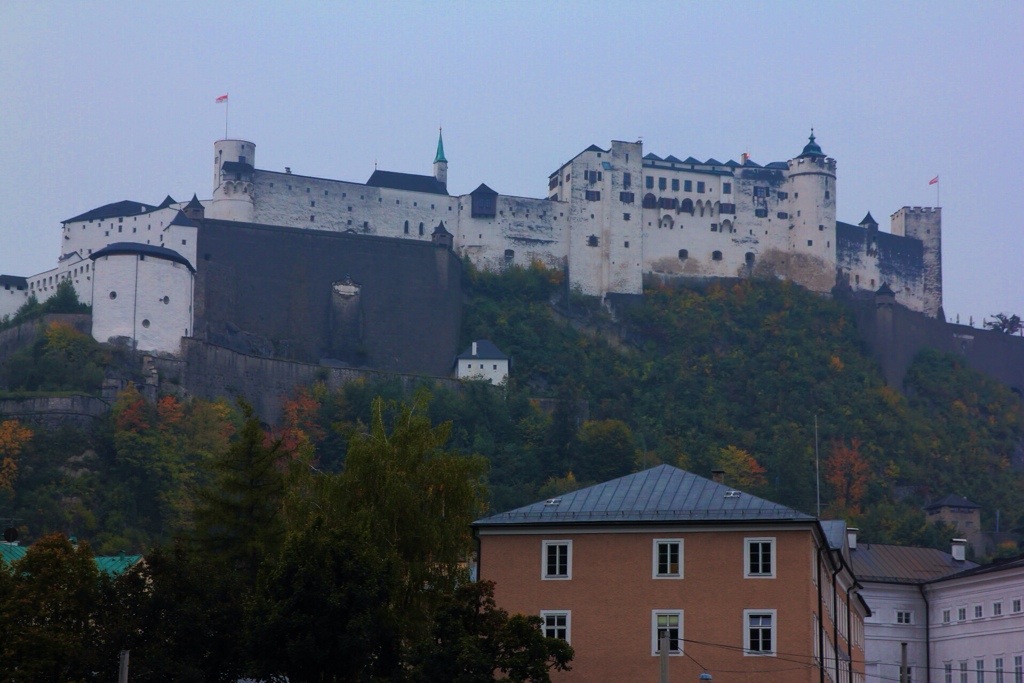
Salzburg lives up to its picturesque, technicolor reputation, but we were determined to avoid all references to the sound of music. The apartment turned out to be all we could wish for, with the windows looking out to the sheer cliff of the Kapuzinerburg and the river and old city no more than a five minute walk away. We had timed our arrival rather brilliantly (not), managing to find the only window in the town’s busy music schedule when there wasn’t a major festival or performance. Sadly, we will be forced to come back one day to enjoy musical Salzburg, but not the bloody Sound of Music.
Of course, it is hard to avoid the sites and sounds from the film. We took some nice photographs in the gardens along the river and I then realised that it was the setting for the bike scene in “Do Re Mi”. The cemetery (Freihof) behind Peterskirche is worth seeing because of the range of very Austrian monuments and grave markers, but of course this was where the escape scene was held — although I suspect it was a stage set in the movie. But they are all there, the caged sepulchres and what-not. It’s actually a relief to get to the other history of the town — the castle, the churches and the beer halls.
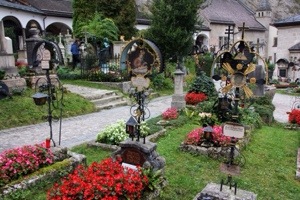
The cathedral took our fancy, not only because it is a beautifully restored gem, nor because the crypt incorporates some significant portions of the earlier basilicas on the site. No, it was the five — yes, five — pipe organs, four of them mounted on the pillars at the crossing. I’ve heard of duelling banjos, but duelling organs?
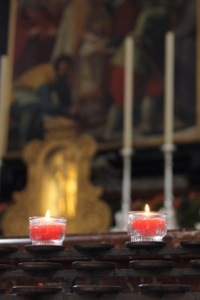
As always, I appreciated the tension between the various religious institutions’ desires to open their buildings for all to admire their art and architecture and the need to preserve them as places of prayer and worship. Paula and I take a middle course: we certainly take an interest in the fabric and the decorations, but in places like Salzburg, we also light candles.
We walked our legs off, but we did take the funicular to the castle. A local laundromat took our business, we cooked an interesting Austrian variation on risotto one night, sampled the pubs and cafés, and had a great final meal at Der Alte Fuchs, the local pub. Next, it’s a whistle stop in Munich, before we catch the plane to Belgium and the fields of Flanders.

